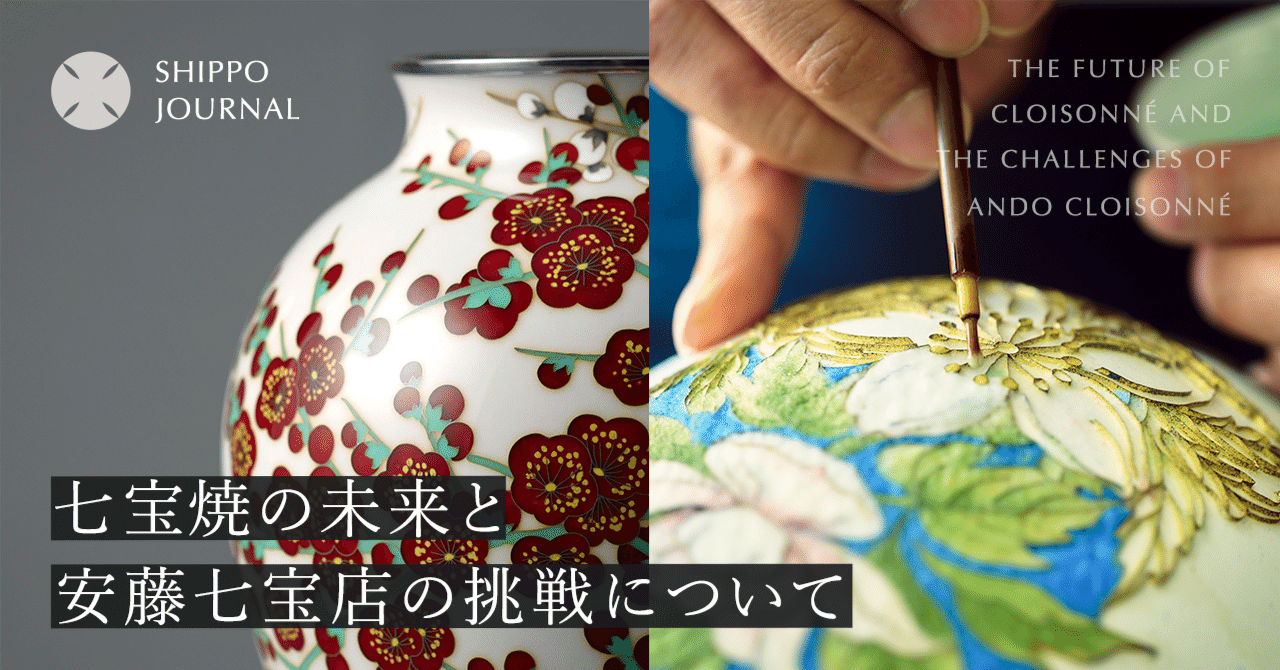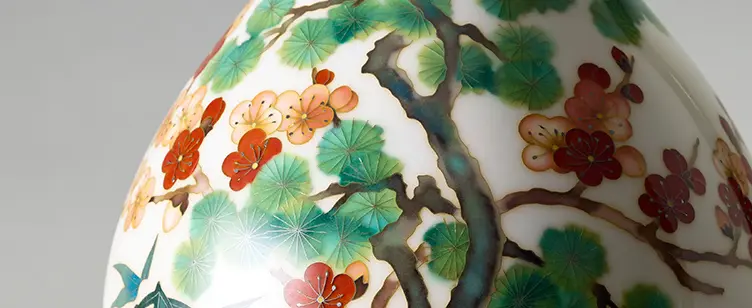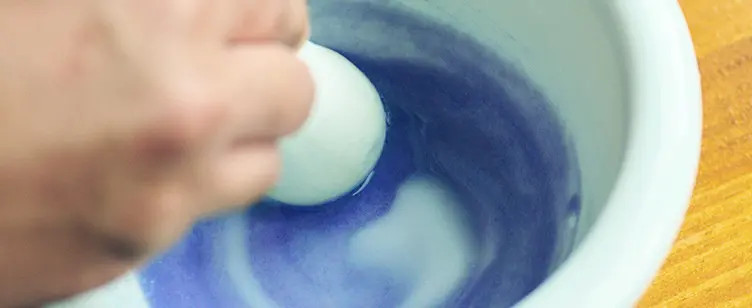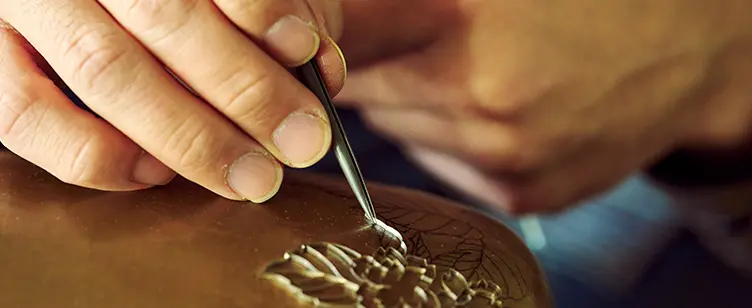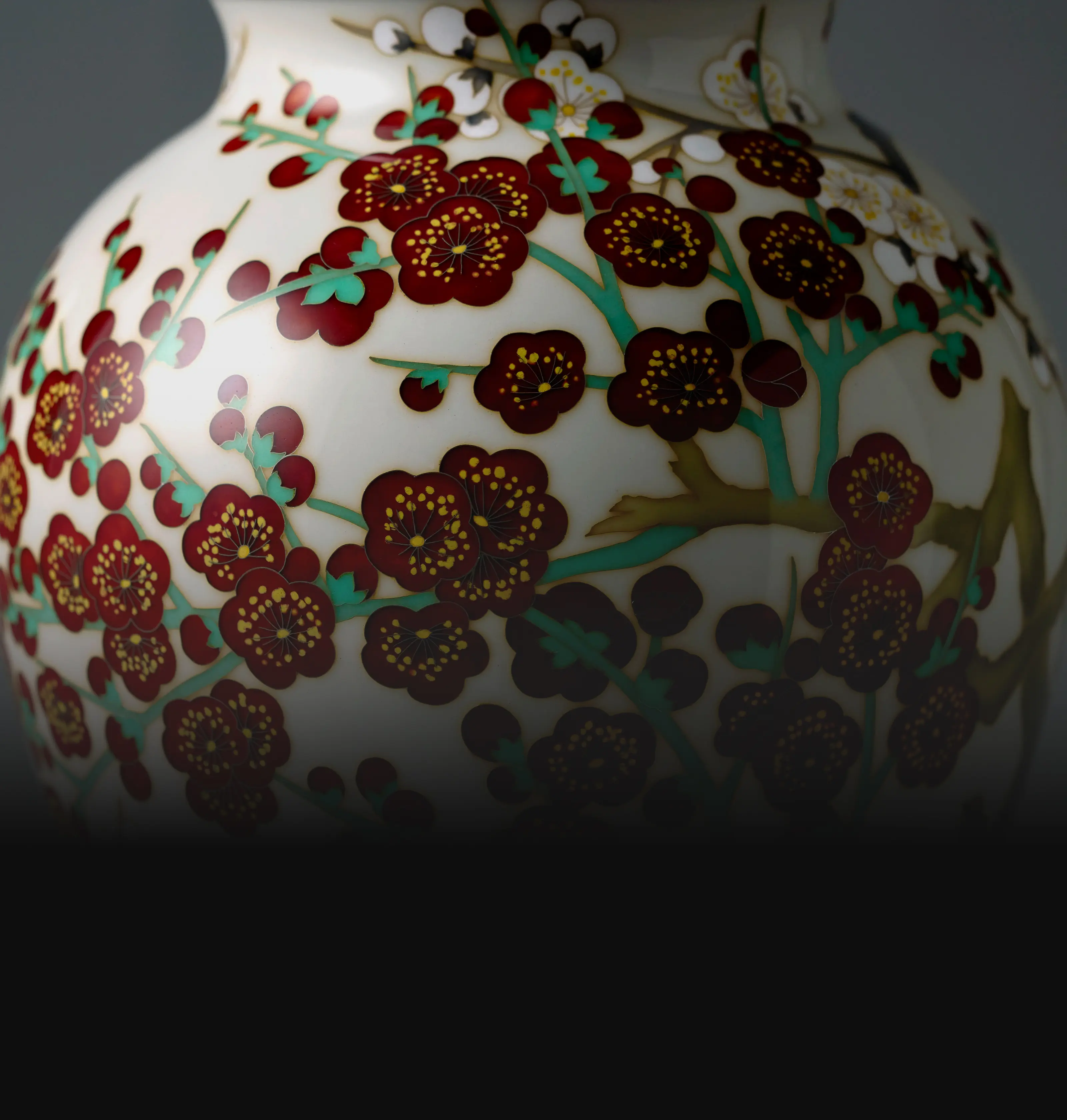Clad in Vivid Colors, Infused with Soul: Crafting Beauty that Resonates
Craftsman Dialogue 04
Enameling
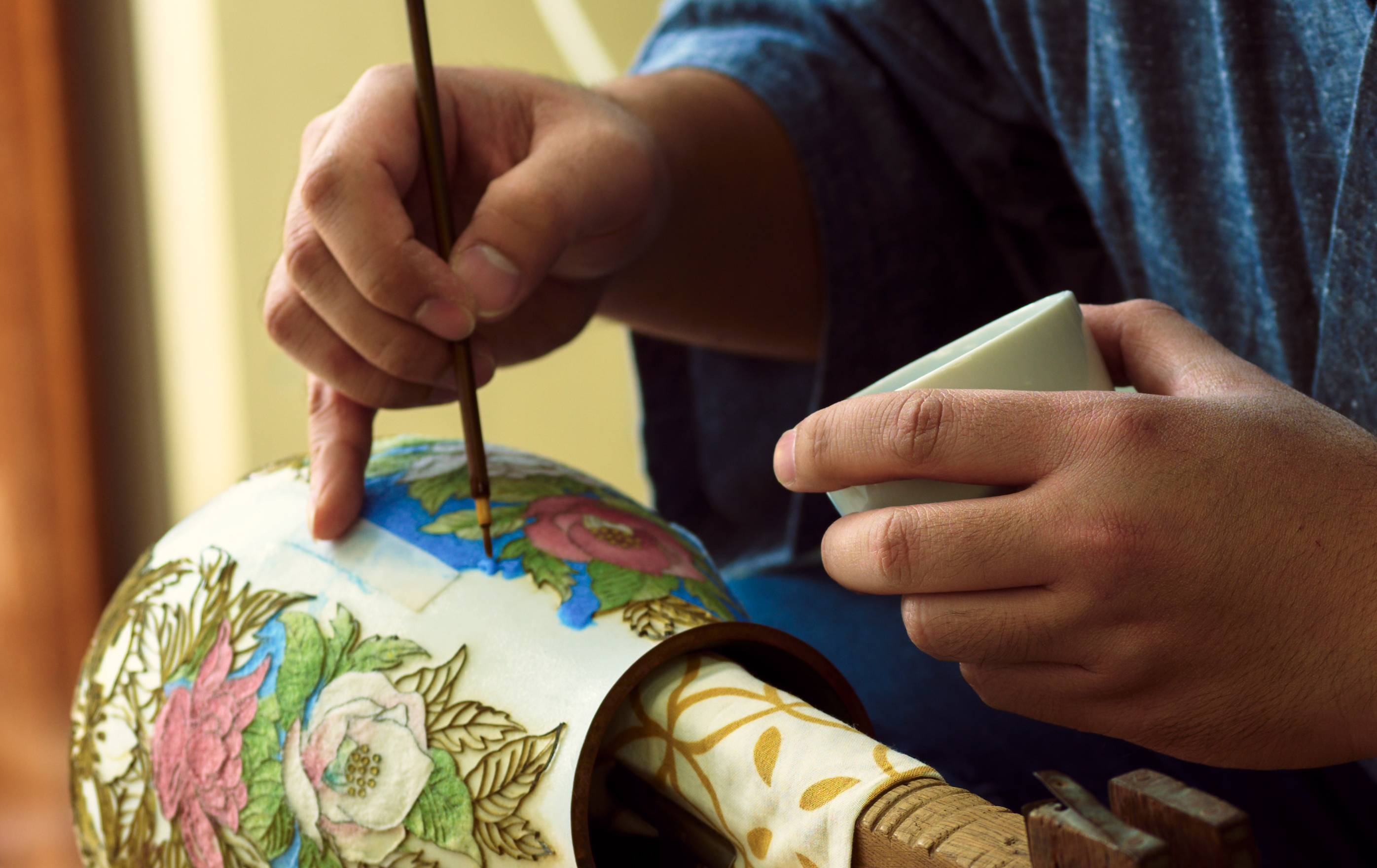
Mixing enamels and applying colors with a brush tip. Enameling (Seyu) is the process of applying enamel and involves coloring along the silver lines and sketches, adding expression to cloisonne through color. Aiming for a beautiful finish requires understanding the combination of colors, the amount of water, and the properties of the enamel. A colorless world becomes adorned with color and light.
Understanding True Intent Behind the Colors Used: Expressions Expanded Through Shades of Enamel
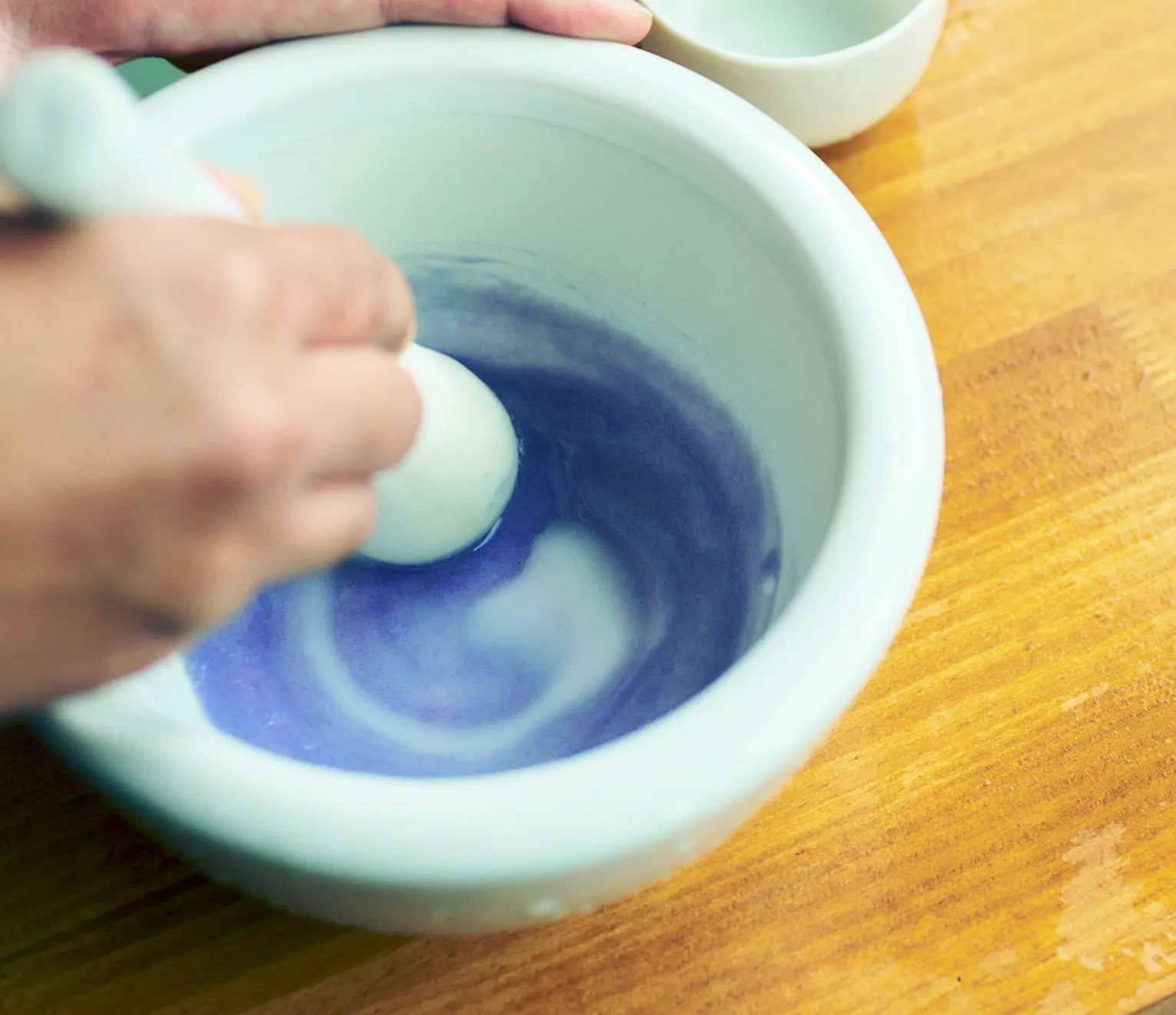
Enamels, made from powdered glass mixed with water, are adjusted to achieve slight variations in intensity, even within the same color. How to accurately replicate the desired designs of customers and achieve a beautiful finish—artisans adjust the colors until they are satisfied. Once the enamel is poured into the vessel and arranged in order of intensity, the preparation for applying the enamel is complete. Colors are then carefully applied with a brush.
There are various types of enamels used in cloisonne. Enamels that require high-temperature firing are for three-dimensional objects, while low-temperature enamels are for flat objects like plates. Beyond the firing temperature, enamels have a variety of properties, including differences in transparency. Artisans handling enamel encompass the characteristics of each one, selecting the final color in mind after firing.

"It is not easy to understand the true intent behind the design and comprehend the use of specific colors," says Shibata, an artisan with over 60 years of experience. He fell in love with the beauty of cloisonne in his teens and has since dedicated himself solely to mastering the technique of applying enamel. Yet, he still feels the challenge of the enamel process.
Fukuda, in her fourth year with the company, is one of those inheriting the enamel technique. Her training began with the basics—preparation of crushing the enamel finely—and continues as she embraces the skills of the trade. "Creating gradients by varying the density of colors involves more than just mixing colors. It's necessary to remember the precise ratios of the colors and to develop a feel for it," she says earnestly. The beautiful cloisonne works crafted by Shibata are reflected in her eyes, inspiring her dedication to the craft.

Refining Sensitivity Daily, Projecting Tradition and Technique Through a Single Brush
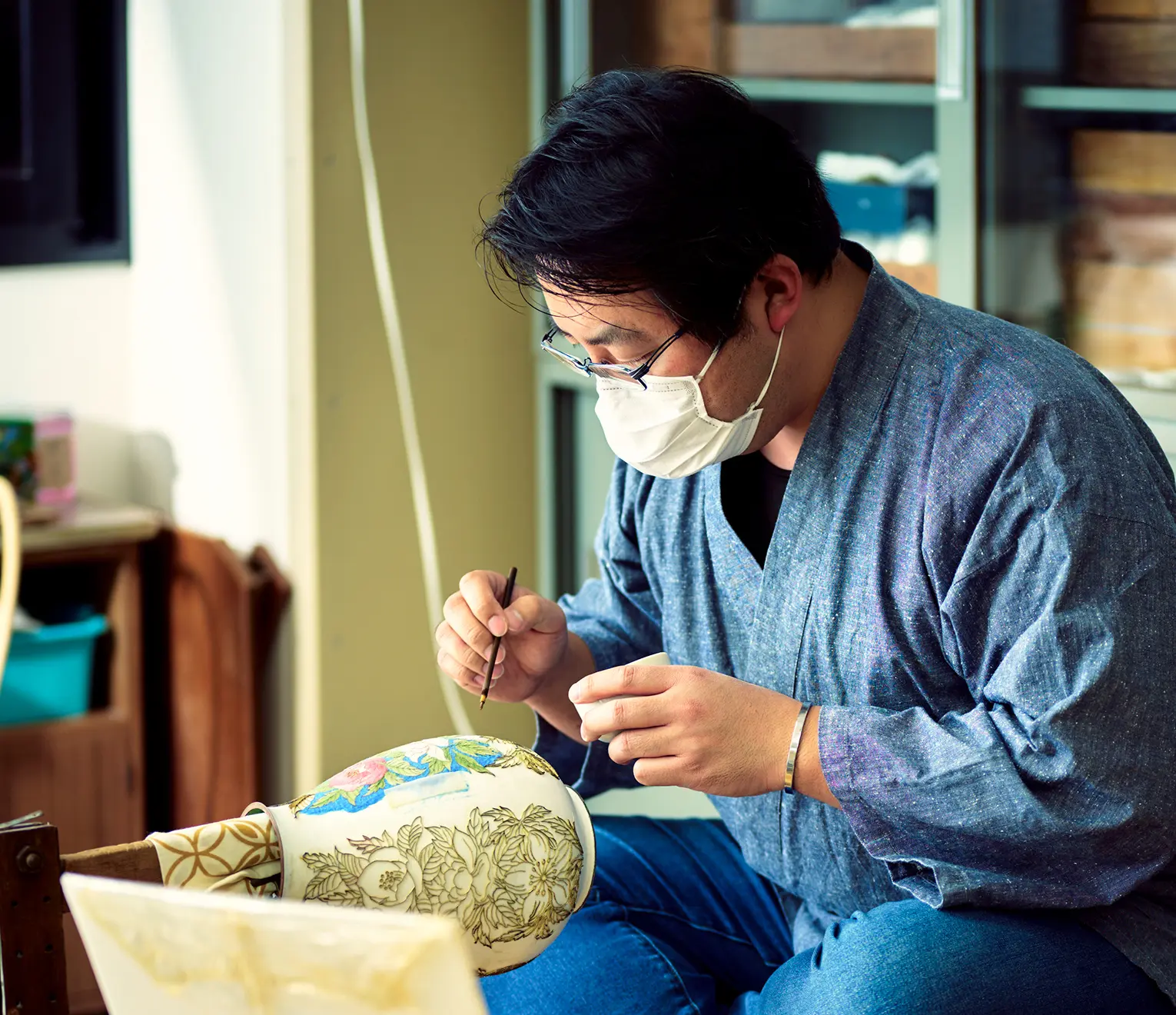
Following the silver wire outlines that define the pattern, the brush gently places colors. For some creations, artisans color directly on the sketches or designs instead of using wires. There are numerous techniques for applying enamel, and by utilizing shades of colors, it's possible to create expressions of light, shadow, and the rich depiction of natural elements.
Totani, with 20 years as an artisan, also carries on the tradition of enamel. "When working on landscape pieces, I make conscious observations of scenery and plants while walking. It helps me visualize natural color schemes." Ordinary landscapes in daily life nurture the artisans' sense of color. "Watching the changing colors of the sky always makes me think about how to capture this beauty," says Fukuda. Eventually, this rich sensibility gets injected into unique pieces of cloisonne.
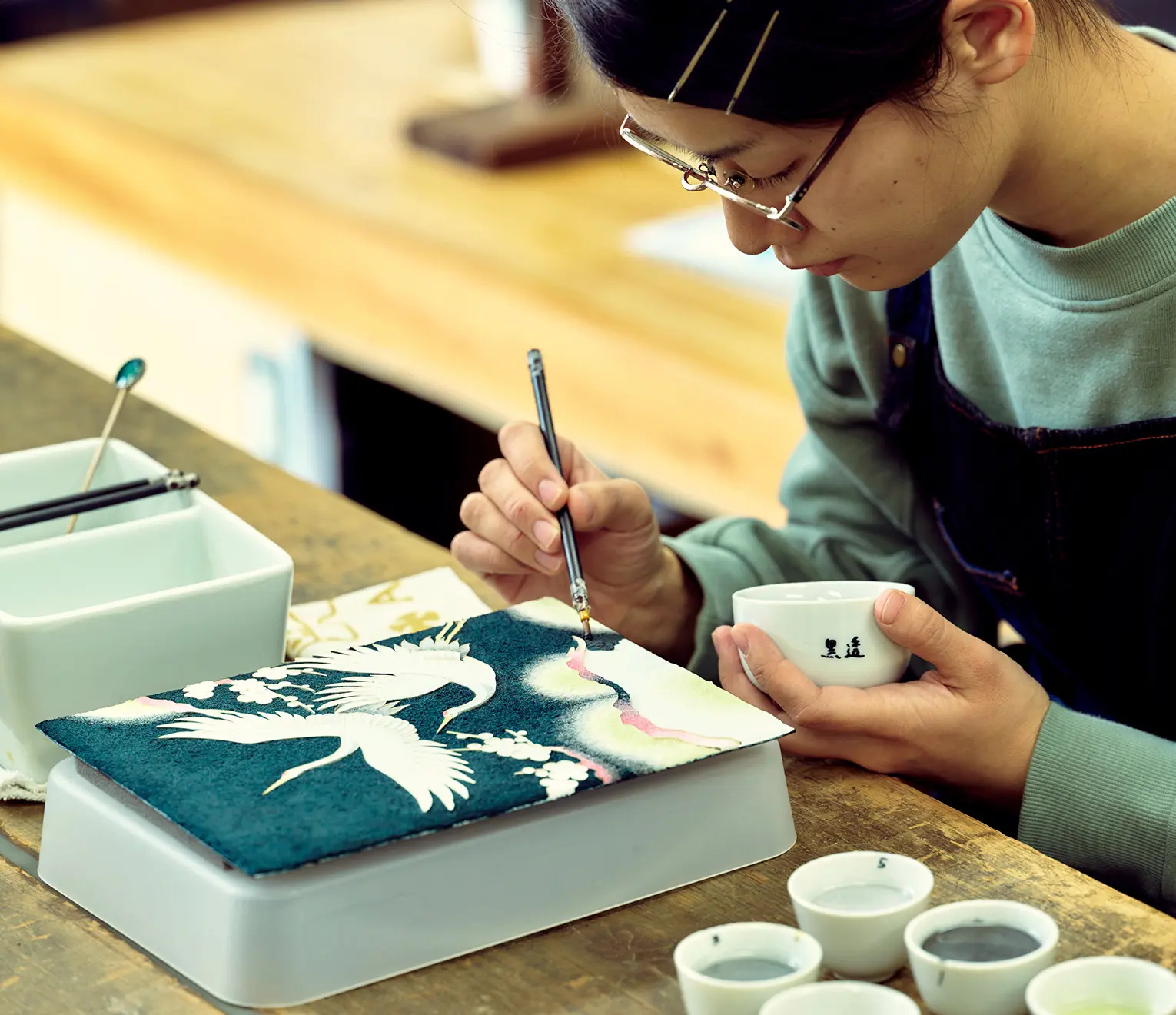
Coating the brush's tip in enamel, colors are carefully applied. Though bamboo spatulas may be used, Ando Cloisonne has upheld the tradition of using brushes for applying enamel. "Using multiple brushes means spending time switching between them, so sometimes we use just one brush for the entire process." The tradition that Fukuda inherits and cherishes will flow to the next generation.
"While preserving the techniques passed down through the ages, I hope to achieve richer expressions. There is room to develop new techniques," Shibata reflects. Having worked on enduring pieces like the Nagoya Castle Honmaru Palace, he believes in leaving something for posterity. In response to the apprentice's passion, he explores further possibilities in enameling.
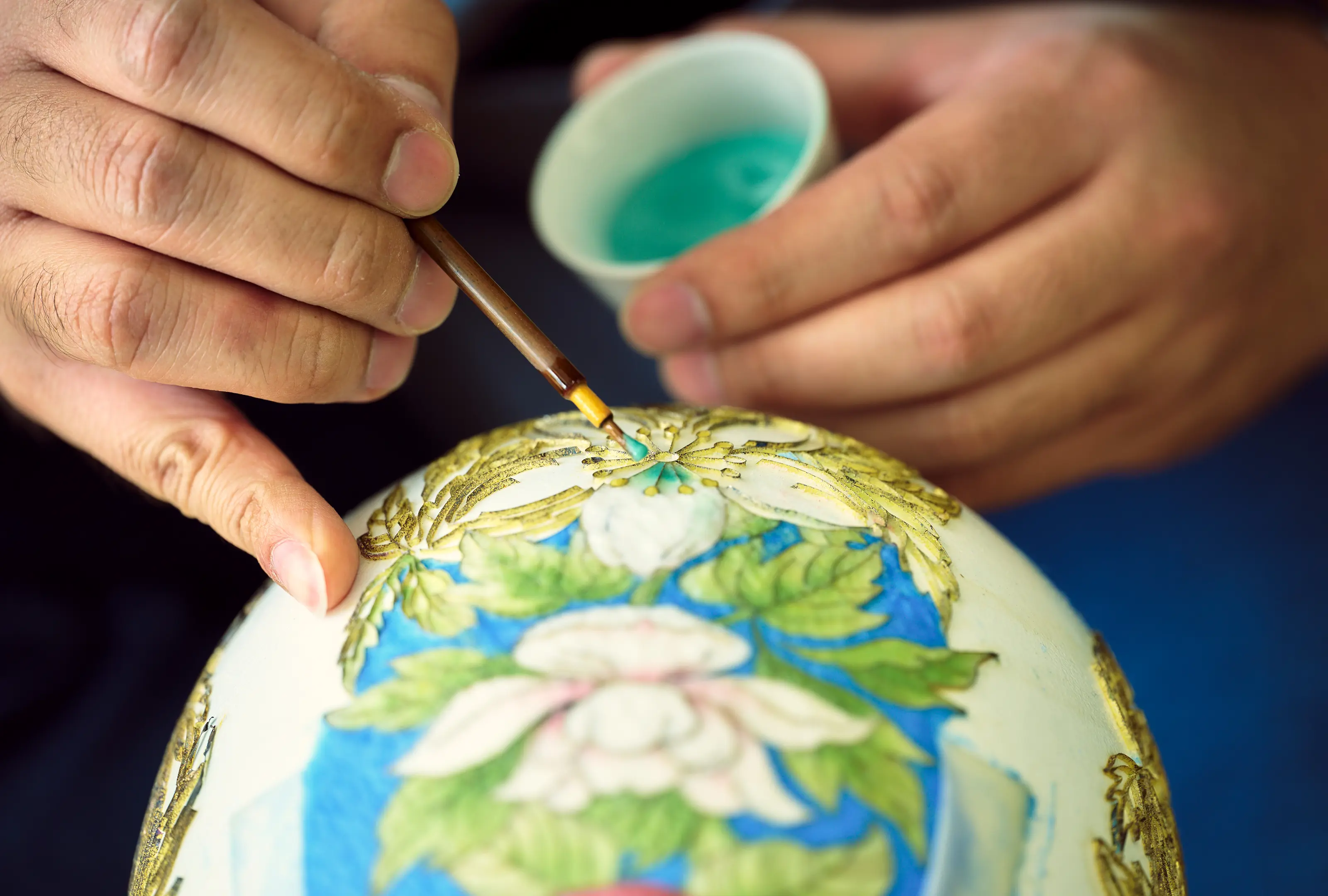
Enlivening Everyday Life with the Luster of Cloisonne: The Artisans' Sentiments Linked by Enamel
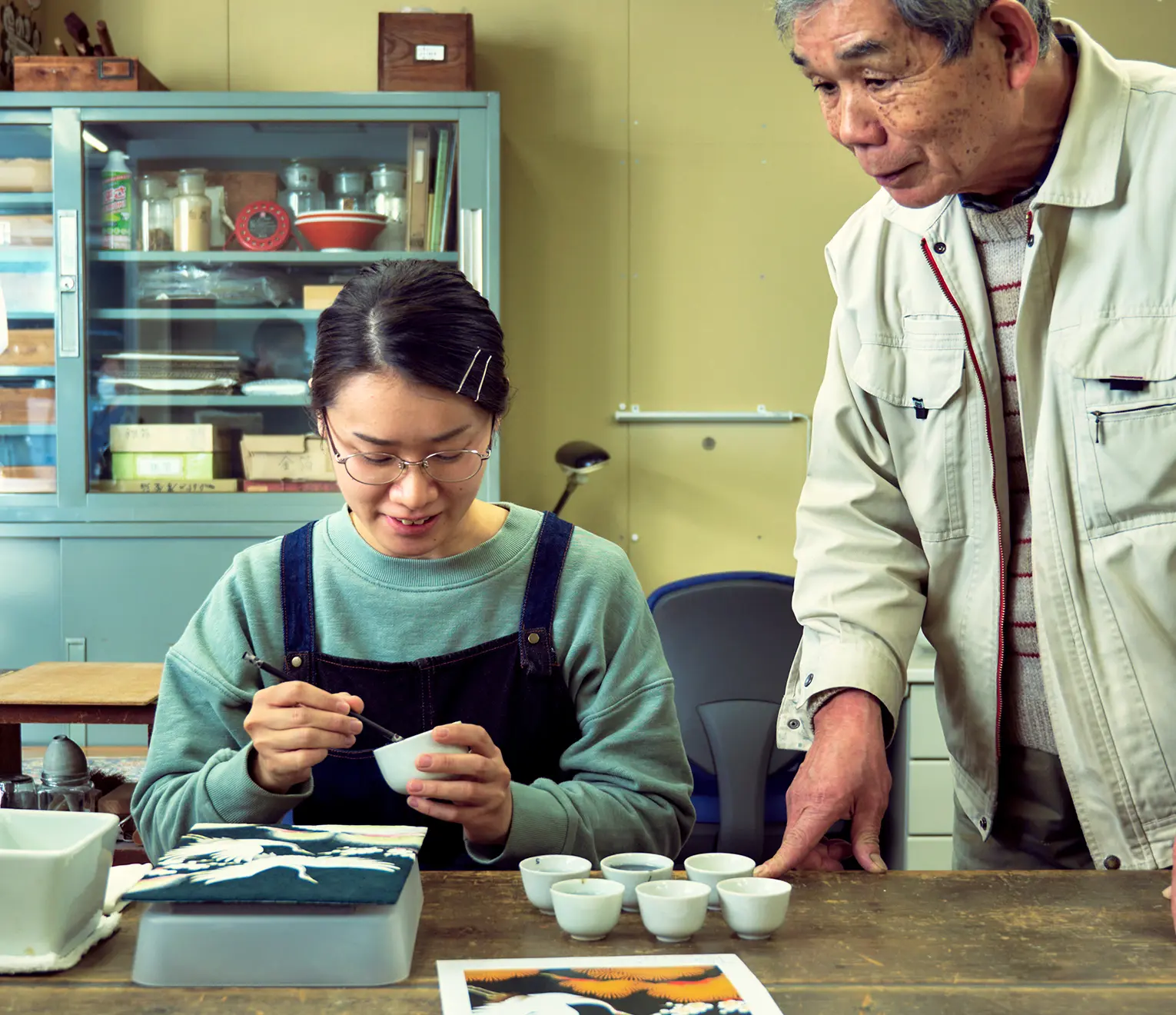
Understanding the properties of enamels and innovating in the application of colors to suit the creation. Enamels can adhere by mixing with a seaweed-based glue, but too much can cause yellowing. "Mastering the right mix of enamel and glue and the combination of colors requires experience. Each piece is a valuable resource in cloisonne making, and we don't want to waste any," Fukuda explains.
Different colors have different properties. For example, red enamels may discolor when reacting with silver. Artisans responsible for enameling are tested not only on their skills but also their knowledge. "Our strength lies in the accumulated history and techniques. The joy customers feel when they receive a piece we've thoughtfully created is immense," Shibata says, with Totani and Fukuda nodding in agreement.

The profound hues, transparency of glass-like quality, and the radiant brilliance of glossy silver lines—all contribute to the captivating beauty left in people's hearts by the technique of cloisonné, coloring metals. Cloisonne is poised to bring a new sparkle into our lives by expanding its reach into jewelry.
"By making it into wearable jewelry, cloisonne becomes more accessible. I want to pass this tradition on to the younger generations," Shibata expresses. Whether coloring historical buildings or small rings, the artisans' passion for their craft remains unchanged. The warmth felt from cloisonne, meticulously colored through enamel, makes one almost forget it's on a metal base. It's likely because the sentiments of the cloisonne artisans, linked through the process, are conveyed.
-
Craftsman Dialogue 01

The Delicate Balance of Strength and Emotion Transforms Rugged Metal into Beautiful Curves
-
Craftsman Dialogue 02

Expanding the Possibilities of Cloisonne with Pioneering and Innovative Techniques
-
Craftsman Dialogue 03

Anticipating Completion, Standing Silver Wires: A Craft Nurtured by Skill and Experience
